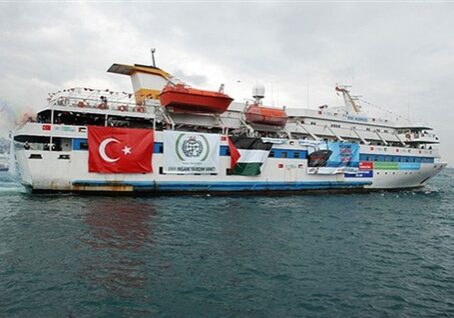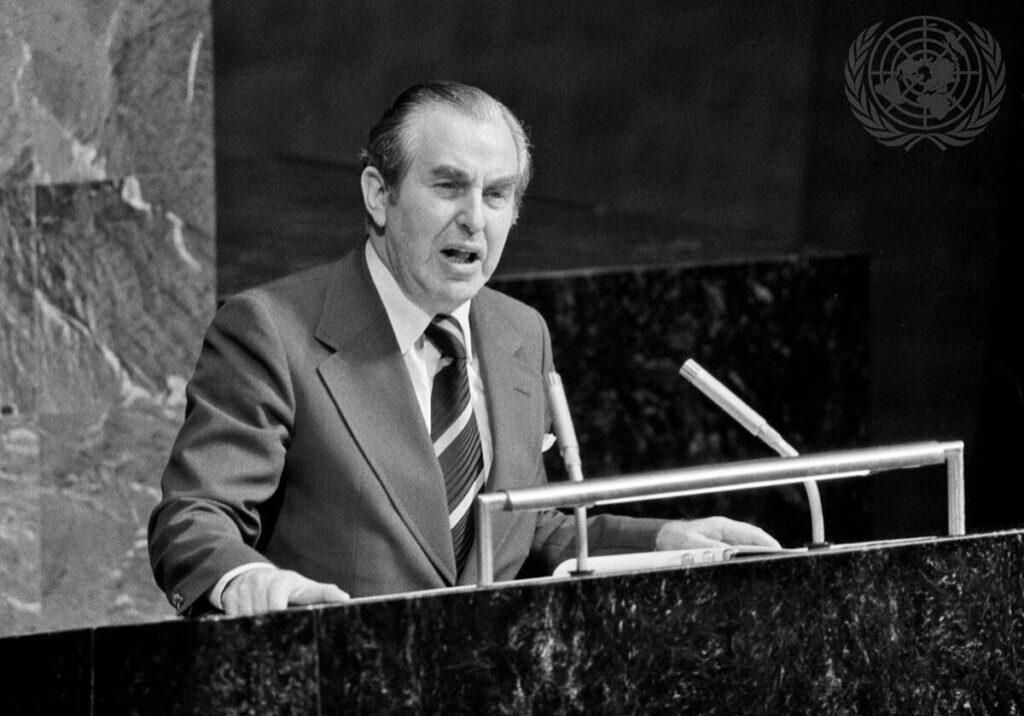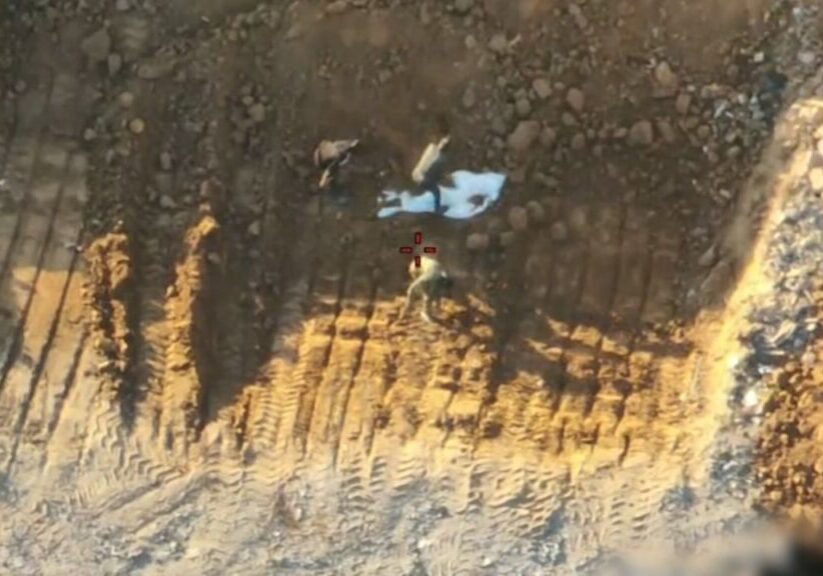Australia/Israel Review
The Cine File: The Camera Does Lie
Sep 27, 2012 | Or Avi Guy

Or Avi-Guy
There is no doubt that “5 Broken Cameras” is a moving, emotional and powerful film. It tries to deal with the Israeli-Palestinian conflict by telling the story of one Palestinian town, Bil’in, which became a symbol of what the film describes as the non-violent resistance against the security fence. In the film, Bil’in is presented as a metaphor for “Palestine”, while the security fence is cast as “the occupation”. This is achieved via a sophisticated, almost subtle, technique – focusing on one very personal story of a man, Emad Burnat, the film’s co-director, a self-proclaimed Palach [farmer], journalist and now filmmaker, along with his youngest son, Gibreel, who was born around the time the construction of the fence had begun.
One voice, one narrator, and one story – the cameras might come and go, but the single perspective never changes.
Sadly, in this post-modern world of ours, words like “truth,” “balance,” “nuance” and “objectivity” often sound somewhat obsolete, and documentary movies dealing with “real-world” events can easily portray a version of reality just as extraordinary, and as contrived, as any Hollywood blockbuster. However, claims to represent absolute versions of truth and reality never die – they are too useful. As Burnat himself stated after a screening in the US, “I think the people [in the United States] should see the film and understand more about the reality and the truth.” But whose “reality” and “truth”, Burnat?
Documentaries are especially powerful tools for exactly this reason – they pretend to expose truth and injustice. After all, the camera does not lie, they say. But how can this be true when film-makers do not see themselves as obligated to capture complexity, multiple narratives or any opposing opinions. The guise of “real events” and “real people” serves to mask heavy layers of framing, narrative-oriented editing and relativism. The result is in fact a remarkable illusion of reality which is nonetheless overwhelmingly manufactured by the film-maker.
Hundreds of hours of footage, filmed over five years, were condensed to an hour and a half of the most heart-wrenching, shocking and moving moments, then put together in this cinematic piece of emotional blackmail. And it works! While the film might be a powerful piece of cinematic art, it is also a highly successful work of deception. (The filmmakers would doubtless call it “artistic interpretation” instead, but “deception” remains the more accurate word.)
And so, this film paints a horrible picture of the realities of the “occupation”: fences, walls and settlements seem to be closing in on the town of Bil’in. Settlers’ violence, destruction of property and livelihood and soldiers’ apathy and brutality threaten its residents.
Palestinian activists are framed as tragic heroes – trying their hardest to resist the evil “occupation”, but inevitably it overpowers them and they are defeated one by one – some arrested, some are killed, others injured – only the cameras keep on rolling. Through the eyes of the cameras, good and bad are laid out as starkly as humanly possible. The world might be filmed in full colour, but its portrayal is as black and white as it can get.
The settlers in the film are from Modi’in Illit – a predominantly Haredi (Ultra Orthodox) town. They are depicted as violent bullies with a sense of entitlement. Definitely super-villain material. The filmmakers, whose sole focus is the demonstrations against the “wall” and expansion of settlements, fail to mention the violence perpetrated against residents of Modi’in Illit by Palestinians, such as the terror attack carried out in 2008 by a Palestinian tradesman who has been working in Modi’in Illit for over a decade, where four civilian residents were stabbed.
The film explains why the Bil’in demonstrations started, because of the construction of the security fence, yet it completely fails to explain why the security fence was constructed to begin with. The second Intifada with its brutal and bloody terror attacks from West Bank-based terror cells – which the fence helped reduce to zero – barely deserves a footnote, according to the filmmakers. Similarly, Hamas flags at funerals and demonstrations that appear in the film are ignored – they don’t exist, except to a knowledgeable observer who specifically looks for them. After all, that might undermine the good vs. bad dichotomy.
In some instances, truth indeed seems to be an inconvenience to the filmmakers. When Burnat crashes his car into the security fence, it is a moment of such perfect irony that would befit the best scripted movie. He is grudgingly forced to acknowledge that it was Israel, and indeed the fence, that saved his life as he is taken for treatment in an Israeli hospital (where he was joined by his family from the West Bank). The irony continues when Burnat complains that the PA refused to pay his hospital bills because his accident was not “resistance-related”, a euphemism for terrorism.
However, wherever such acknowledgments that the other side is not completely evil can be avoided, they were. For example when Israeli soldiers and paramedics treat Palestinians after a clash with settlers, the Israeli assistance is ignored in the narrative even when documented on film for those who look carefully.
Other than one-sided framing and many sins of omission, there are several moments in the film that might cause the critical viewer to question whether what they are seeing is spontaneous authentic moments, or acted out “make-believe”. Some scenes and dialogues are quite clearly staged. For example, after Burnat’s first camera breaks down, he receives his second camera from an Israeli friend. This moment itself is filmed. One might wonder why Burnat bothered to film this moment? Was a film based on this footage already on his mind?
This, the filmmakers would presumably argue, is irrelevant – those moments acted for the camera might well have happened in real life. This is what happens when “real” is stripped of any meaning.
Even Burnat’s narration itself – made personal both by the camera’s perspective, as the viewer sees the world through his eyes, and by the film’s plot in which his private story and the story of Bil’in are intertwined – was in fact written by his Israeli co-director Guy Davidi. It was later translated into Arabic. Someone else wrote Burnat’s story, in a foreign language, for him to repeat.
Word selection in the narration is also crucial to the propaganda purpose – and sometimes amounts to open deception, and not simply through omission. “Rubber bullets” are replaced with the words “live ammunition”. The word “tear” in “tear gas” is omitted. Since tear gas is commonly used all over the world for crowd control, simply saying “gas” sounds much more horrifying.
Some fragments of a broader sense of reality manage to “infiltrate” the film despite the filmmakers’ going to great lengths to reduce them to a minimum through editing them out or ignoring them. Most importantly, rock throwing and intentionally clashing with soldiers to cause dramatic confrontations in front of the cameras occasionally can be witnessed, despite the film’s attempts to paint all Palestinian actions as completely non-violent and all Israeli Army responses as disproportionately brutal.
Ignoring almost entirely these two phenomena in the narrative, although they repeatedly appear on film, is absurd. The two merge in one of the most powerful scenes in the film. In it, children from Bil’in demonstrate against the fence, where they confront Israeli soldiers. One of the prominent activists in Bil’in, Bassem Abu Rahmah, known as ‘al-Pheel’, is calling out peaceful messages to the soldiers. As he talks, the kids behind him start throwing rocks at the soldiers.
Al-Pheel turns to them and tells them off. The manipulation and abuse of children and the non-violent façade of the demonstrations are exposed in one little glimpse of truth. You will not find many more of those in the 1 hour and 30 minutes of “5 Broken Cameras”.
“5 Broken Cameras” is being featured as part of the Antenna International Documentary Film Festival in Sydney in mid-October. Also featured is the Israeli documentary “The Flat”.
Tags: Israel






